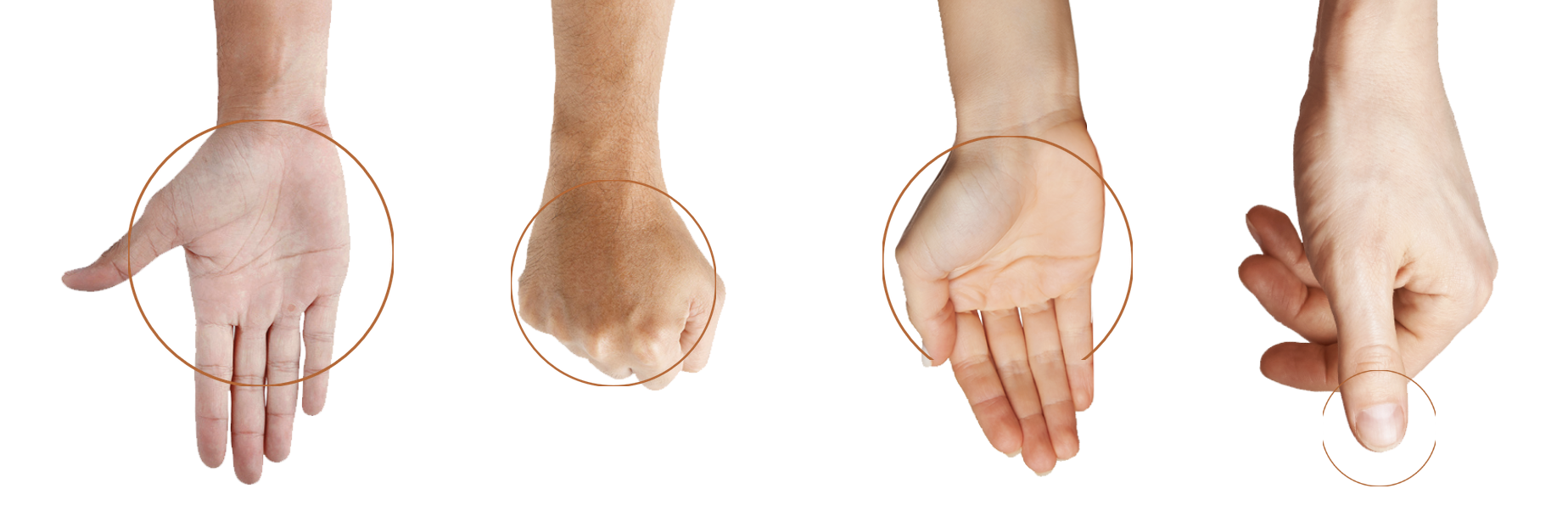How to build the perfect plate.
Knowing what to eat is only half the battle regarding healthy nutrition – you also have to know how much to eat. Over time, food and drink portions have increased in size. The more food served on the plate, the more food we consume, leading to overeating.
With this awareness and a guide to managing portion sizes, we can eat healthy and balanced foods, building a better relationship around what we put into our bodies.
A simple, effective, and proven method is the Hand Portion Method. The idea is that you’re not measuring or weighing your food using technology but instead using your own hand to gauge the size of the portion. Your hands are proportional to your body and go where you go. This makes them the perfect tool to quickly and easily gauge your portion size, even when eating out.
This method is for anyone struggling with food-tracking apps and meal logs. It’s the perfect way to build any meal with a habit-centric approach. To get started, try each step below.
Start with protein.
Protein is the most essential nutrient for muscle building, support, transport of nutrients, as an enzyme, and many more. Yet, in the Western diet, carbs are typically the basis of most meals. Unfortunately, those carbs are often highly refined and have a high glycemic index, which leaves us hungrier sooner than later. So, let's start with your protein.
Raise your hand in front of your face. This will be your new portion measure.
For protein, one serving can be measured as one to two palm-sizes of meat, fish, dairy, or plant-based protein.
Fill half the plate with fruit or veg.
We all know that fruit and vegetables should be the foundation of a healthy diet. But do we really know why? In short, they provide essential micronutrients (e.g., vitamins and minerals), antioxidants, and fibre needed for energy production, immune function, control of inflammation, healthy digestive system, and overall health.
Some examples of fruit and veg portions:
• 1-2 handfuls of spinach or leafy greens
• Mixed garden vegetables
• Chopped peppers/carrots and hummus
• Mixed fruit salad
• Roasted sweet potato fries
Fill the remainder of the plate with carbs.
Carbs aren't "bad" when portion control comes first. Yet, seeing one actual serving size of rice, pasta, or bread often comes as a surprise. It's smaller than you'd think. We recommend filling the plate up and adding the carb last. You should always prioritise unprocessed carbohydrate sources such as brown rice or pasta, quinoa, legumes, and sweet potato.
Add a source of healthy fats.
When we say healthy fats, we simply mean unsaturated fats versus saturated. Dietary fat is beneficial to consume and essential for optimal health. We need fatty acids for several crucial functions, including the absorption of vitamins, the production of hormones, and cell protection.
To measure fats, raise your hand in front of your face again. Stick out your thumb. Depending on your size, try incorporating 1-2 thumb sizes of fat into your meal. Good options include cold-pressed virgin olive oil (for cooking), grapeseed oil (for cooking), coconut oil (saturated fat, but still good), a small handful of nuts (1-2 thumbs), seeds (flax, chia, etc.), avocado oil (for cooking), salmon, avocado.
If you would like advice and support to transform your eating habits and maximize satisfaction, speak to Future Days about our custom nutrition coaching services.
Read more about our services on our Nutrition page, or book your Body Blueprint Consult here.




